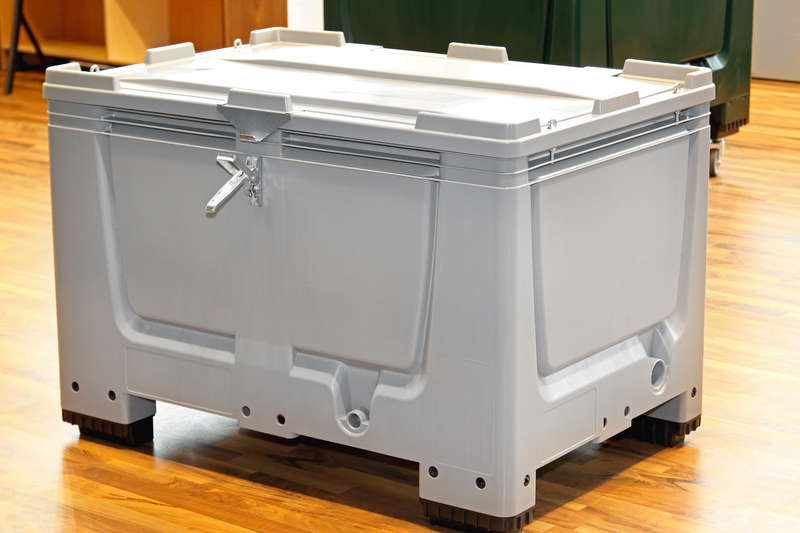What Furniture Experts Do to Preserve Sofas in Storage
Ever wondered why some people retrieve their sofas from storage looking brand new while others find their couches cracked or infested? It's not luck--it's a matter of furniture storage expertise. This comprehensive guide explores what furniture experts do to preserve sofas in storage, offering you insider secrets for protecting your beloved furniture. From choosing the right environment to professional wrapping techniques, discover how preservation specialists keep stored sofas in pristine condition.
- Choosing the Right Storage Environment
- Proper Preparation: Cleaning and Prepping Sofas
- Disassembly: Breaking Down for Safe Storage
- Wrapping and Covering Techniques
- Correct Positioning and Placement
- Climate Control and Humidity Management
- Pest and Mold Prevention Steps
- Long-Term Care and Regular Inspections
- Extra Furniture Expert Tips for Sofa Storage
- Frequently Asked Questions
Choosing the Right Storage Environment
Experienced furniture professionals prioritize the storage environment first. Not all storage spaces are suitable for sofa preservation. Factors like temperature, humidity, cleanliness, and security directly impact the longevity and appearance of stored sofas.
Key features of expert-recommended storage units include:
- Climate control: A temperature and humidity-regulated environment is crucial to prevent warping, mold, and cracking.
- Dryness: Sofas absorb moisture easily, making damp conditions a recipe for disaster.
- Security: Protecting against theft, vandalism, and accidental damage is non-negotiable.
- Ventilation: Adequate airflow prevents musty odors and discourages pest infestation.
Furniture preservation experts always choose self-storage units specifically designed for sensitive items like sofas, antiques, and fine wooden furniture.
Proper Preparation: Cleaning and Prepping Sofas
Preserving sofa quality in storage starts long before the couch enters the storage facility. Cleaning and prepping are critical steps that furniture experts never skip.
Why Cleaning Matters
- Hidden debris: Dust, food crumbs, and oils can break down fabrics and foams over time.
- Reduced risk of pests: Clean furniture is less attractive to moths, rodents, and insects.
- Odor prevention: Smells worsen in closed spaces; thorough cleaning keeps your sofa fresh.
Professional Cleaning Methodology:
- Vacuuming: Experts use powerful vacuum cleaners with upholstery attachments to extract dust from crevices and cushions.
- Stain removal: Immediate treatment of any stains with fabric-appropriate cleaners ensures long-term protection.
- Steam cleaning: Optional but especially recommended for deep cleaning fabric sofas.
- Drying: Allowing the sofa to dry completely is essential. Damp upholstery can lead to mold during storage.
Pro tip: For leather sofas, experts gently clean with a specialized leather solution and apply a conditioner to prevent drying or cracking.
Disassembly: Breaking Down for Safe Storage
Disassembling your sofa before storage is a classic preservation expert move. Large, bulky furniture is more prone to accidental damage in transit and during storage.
Benefits of Disassembly:
- Safe storage: Detached legs, cushions, and arms reduce space requirements and minimize stress on joints.
- Avoid tension: Sofas often rest unevenly in storage; disassembly minimizes warping and frame stress.
- Easier movement: Moving individual components is safer for your sofa and your back.
What furniture experts usually detach:
- Sofa legs
- Removable cushions
- Headrests and armrests (if possible)
Label all hardware and components, keeping them together in a clearly marked bag. This simple measure prevents confusion and loss.
Wrapping and Covering Techniques
Wrapping is not just about dust protection. It creates a barrier between your sofa and hazards like moisture, insects, and accidental scrapes. Expert furniture handlers employ specific wrapping strategies for optimal sofa preservation in storage.
What Furniture Experts Use:
- Soft, breathable covers: Cotton or linen covers allow air circulation while keeping out dust. Avoid plastic directly on fabric surfaces, as it traps moisture.
- Plastic wrap for base areas: Strategic use around sofa feet and the lower frame, where moisture is more likely.
- Bubble wrap for vulnerable corners: This prevents nicks and tears during storage or transport.
Never use shrink wrap over the entire sofa. While it may seem protective, it can trap humidity, creating the perfect conditions for mold and mildew.
Extra tip: For leather sofas, a breathable cover is a must--never plastic! Leather needs to breathe.
Correct Positioning and Placement
How a sofa sits in storage is just as important as how you wrap it. Furniture experts focus on several placement considerations to ensure couches come out of storage in excellent condition.
- Elevate the base: Never rest a sofa directly on the storage floor. Use wooden pallets or blocks to keep it elevated, protecting it from potential water damage and improving air circulation.
- Leave space around: Avoid pushing the sofa directly against other stored items or the walls. This helps airflow and prevents accidental scuffs.
- Don't stack heavy objects: Placing boxes or furniture on top of a sofa can permanently deform cushions and upholstery.
- Upright storage: When space is tight, storing the sofa upright on its side is better than horizontally stacking.
Climate Control and Humidity Management
Climate is the silent destroyer when it comes to sofa storage. Ambitious do-it-yourselfers sometimes underestimate the damage caused by fluctuations in temperature and moisture.
Furniture experts insist on storage units with:
- Consistent temperature: Ideal conditions range between 50-75?F (10-24?C).
- Controlled humidity: Levels should remain below 50%. Overly dry air can crack leather; moisture causes mold, warping, and rust.
- Dehumidifiers or moisture absorbers: In especially humid climates, these are essential for keeping sofas safe.
Monitoring devices (like hygrometers) are often used to track conditions inside the storage unit.
Pest and Mold Prevention Steps
Infestation is one of the greatest dangers for stored sofas. Furniture storage specialists systematically reduce risks with a combination of cleaning, wrapping, and preventive measures.
Top strategies for expert sofa preservation:
- Pest repellents: Non-toxic sachets, mothballs, or cedar blocks placed around the sofa deter insects and rodents.
- Moisture absorbers: Silica gel packets or calcium chloride devices inside and around the sofa absorb errant moisture.
- Cleaning storage spaces: Professionals clean storage units before and after adding furniture to remove food traces or nest sites.
- Keeping food and organic waste out: Never store items in the same unit that could attract pests.
Regular inspections during storage can catch early signs of mold or pests before they cause lasting harm.
Long-Term Care and Regular Inspections
Furniture preservation does not end when you shut the storage unit door. Furniture storage professionals schedule periodic checkups, even for long-term storage. These inspections allow early detection and correction of problems like condensation, pests, or shifting covers.
- Quarterly or biannual checks: Look for signs of moisture, mold, or insect activity.
- Readjust wrapping and covers: Time or movement can loosen protective layers. Tidy up as needed.
- Condition leather or wood: For extended storage, a light reapplication of leather conditioner or wood oil prevents drying.
- Rotate and air: If your storage setup allows, occasionally rotating your sofa and briefly airing it out refreshes upholstery and stuffing.
These steps are the reason sofas in professional storage facilities so often look "like new" after months or even years out of use.
Extra Furniture Expert Tips for Sofa Storage
- Take photographs before storage: A visual inventory can help with insurance, repair estimates--and reassembly.
- Store vertically, not horizontally, if stacked: If stacking is necessary, always keep the sofa on its side, not back/bottom, to avoid cushion deformation.
- Mark fragile areas with tape: Use painter's tape or tags to call attention to exposed corners or delicate fabric.
- Keep a storage log: Tracking the last inspection and any maintenance helps ensure no step is missed.
Bonus tip: For modular or sectionals, wrap each piece individually and number them for easier reinstallation.
Frequently Asked Questions: Sofa Storage and Preservation
Can you store a sofa upright to save floor space?
Yes--sofa preservation professionals often store sofas upright (on the arm or back), provided it is stable and protected. Never store the sofa lying directly on upholstery, as it can compress/puncture the fabric.
Is using plastic wrap on sofas safe for long-term storage?
No. Fully wrapping with plastic can cause moisture buildup, encouraging mold and mildew. Only use plastic strategically (like on legs/feet) and opt for breathable fabric covers elsewhere.
How do experts prevent smell in stored sofas?
By deep cleaning beforehand and using odor-absorbing agents such as baking soda, activated charcoal, or commercial absorbers. Experts also ensure good airflow in the storage space to keep stored sofas smelling fresh.
Are climate-controlled storage units really necessary for all sofas?
For high-quality, antique, leather, or upholstered sofas, climate control is essential for preservation. Wooden and leather furniture is most vulnerable to temperature and humidity swings.
How long can a sofa be stored with proper expert techniques?
With correct preparation and ongoing checks, sofas can be preserved in storage for several years with minimal degradation.
Conclusion: Achieve Professional Results When Preserving Your Sofa in Storage
Preserving sofas in storage is part science, part attention to detail. When you implement the methods professionals use--including climate control, thorough cleaning, wrapping with breathable covers, proper positioning, and regular inspections--you maximize your furniture's lifespan and value.
Whether you're storing a designer leather couch, a family heirloom, or a simple sectional, follow these expert-approved steps to ensure your sofa emerges from storage looking and feeling as good as new.
Remember: Invest in proper preparation now, and you'll enjoy a well-preserved, beautiful sofa for years to come!





